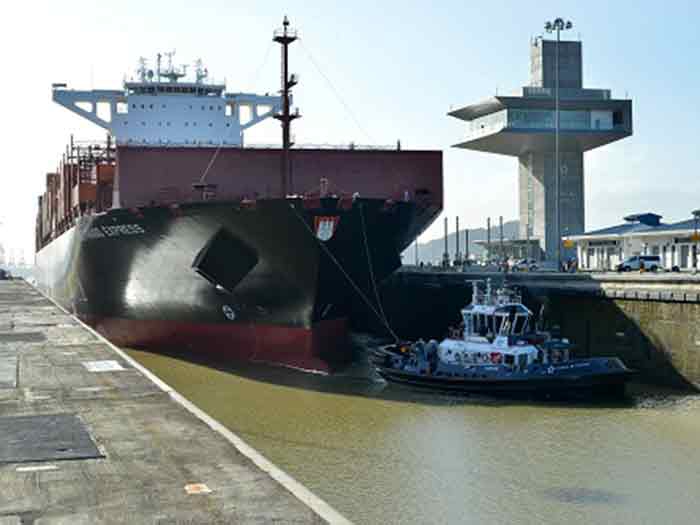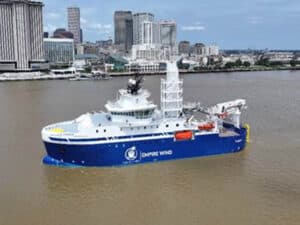
Green award for largest box ship to transit Panama Canal
Written by Nick Blenkey
Val Paraiso Express
DECEMBER 22, 2016 — Hapag-Lloyd’s Valparaiso Express this week became the largest capacity vessel thus far to transit the Panama Canal’s Expanded Locks.
The 10,589 TEU Neopanamax containership was specifically built to take advantage of the greater capacity offered by the Expanded Panama Canal and her passage ushers in a new era of mega-ships able to transit the Expanded Canal.
The vessel’s many environmentally friendly features include a shoreside power connection, enabling auxiliary diesels to be switched off in port, a fuel-efficient 46,530-horsepower main engine with an emissions-reducing valve control. By using the Panama Canal, the Valparaiso Express saves more than 8,500 tons of carbon dioxide (CO2) emissions on its roundtrip voyage compared to other routes.
In recognition of its substantial emissions reductions, the Panama Canal awarded the vessel with its newly established Green Connection Award, an initiative created to recognize Canal customers who demonstrate excellent environmental stewardship, and to encourage others to implement technologies and meet standards that help reduce greenhouse gas emissions.
The new locks, which are 70 feet wider and 18 feet deeper than those in the original Canal, are able to accommodate Neopanamax vessels carrying up to 13,000 to 14,000 TEU.
Valparaiso Express began its transit at the Pacific-facing Cocoli Locks December 20, following calls at ports in Chile, Peru, Ecuador and Colombia. After completing its transit through the Atlantic-facing Agua Clara Locks, the ship’s next stop was Manzanillo International Terminal in Panama before continuing its route to terminals in the Dominican Republic, United Kingdom, Germany, Belgium, France and the Netherlands.
The Valparaíso Express is part of Hapag-Lloyd’s Europe – South America West Coast service, which covers a nine-week rotation, merging two previous services between Northern Europe and the West Coast of South America.





Leave a Reply
You must be logged in to post a comment.